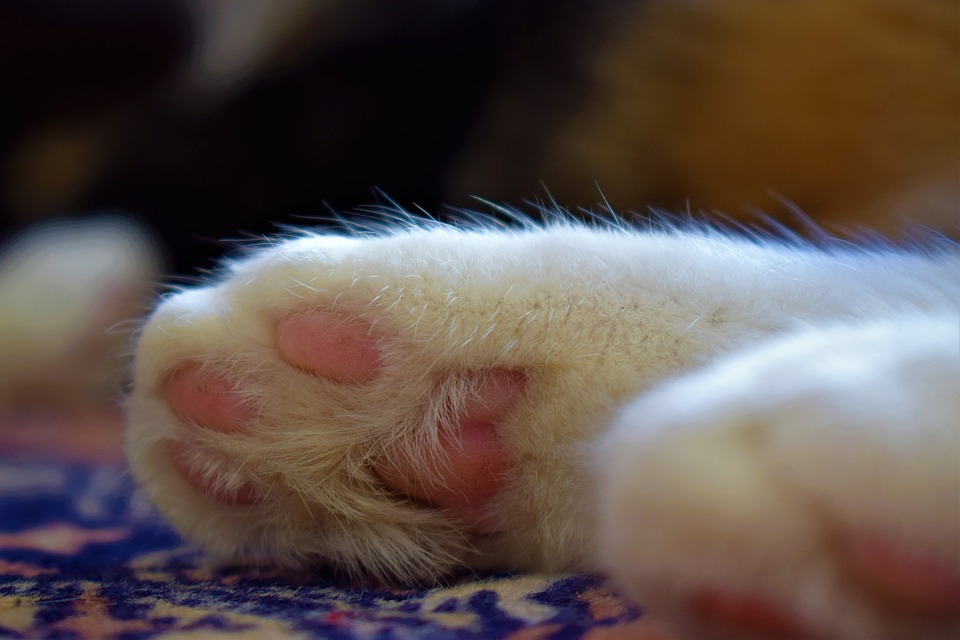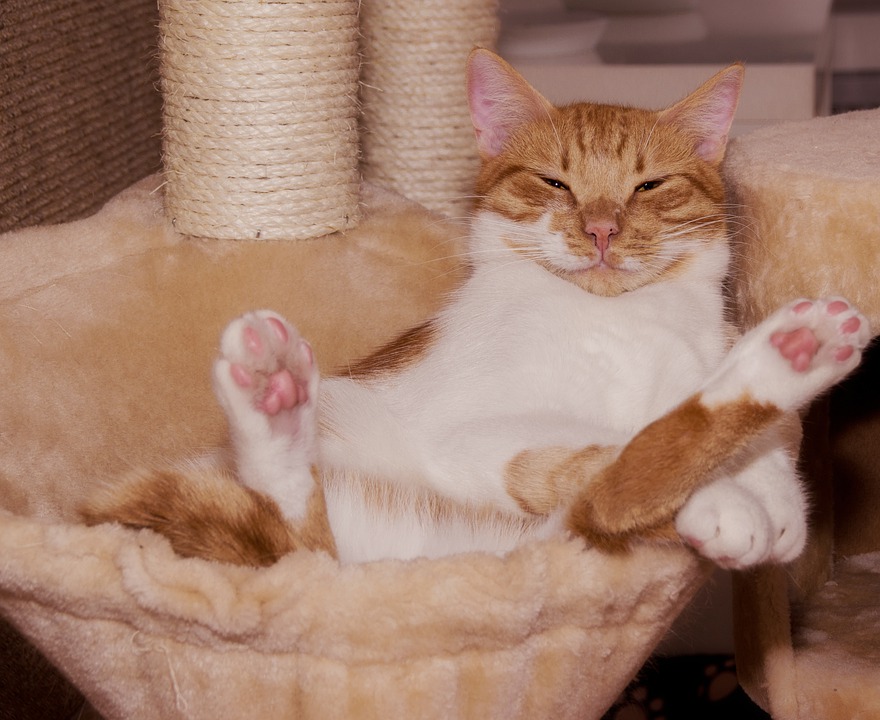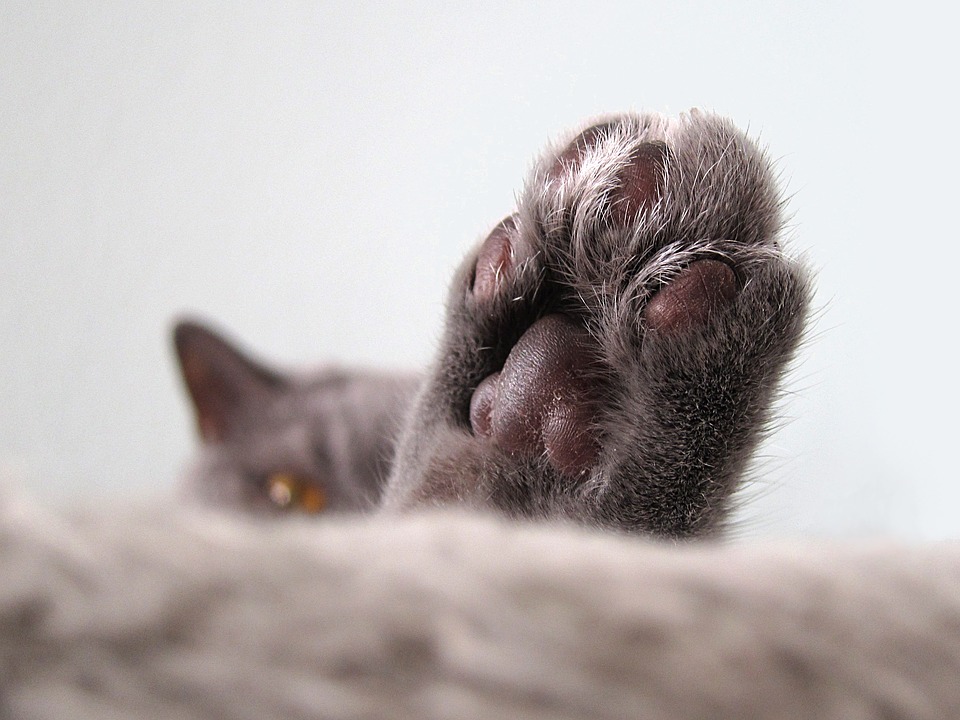 |
| ▲ cat foot (source = Pixar Bay) |
The cuteness of the soles of cats is a high name among lovers. This dongle dongle, which is visible between the fur, is soft and soft and makes you feel better. Where is the person who does not think that I want to see the cat's soft pink soles pad and want to touch it?
However, the soles of cats are actually versatile and have a very important function in running, walking and walking. In addition, the soles of cats are vulnerable to a wide variety of symptoms, ranging from simple infections to serious illnesses ranging from immune system disorders to death.
Cat foot disease, 'pillow feet'
Pillow Feet, one of the diseases that can cause cat foot disease, is also called 'pillow po' or 'bad poo'. The exact name of the medicine is 'feline plasma cell pododermatitis' which causes inflammation or swelling of the sole pad. Occasionally, it can cause pain every time you walk.
This disease literally implies infiltration of inflammatory cells in the plasma cells of the sole pad. Plasma cells are a kind of white blood cells, which are immune cells that secrete antibodies that respond to or counteract infection. On the other hand, when excess plasma cells are secreted from the lymphocytes of cats, they flow over the pads on the bottom of the soles, causing the pads to rub, swell and irritate. However, the cause of the secretion of excess plasma cells by cats is not yet clear.
In fact, the exact cause of the pillow pit was not revealed. Therefore, it is also known as cat rare disease. Numerous veterinarians and veterinary dermatologists say the disease has been found in the cats immune system and can be seen as an allergic reaction. On the other hand, although recent studies have suggested that plasma cell dermatosis is associated with cats immunodeficiency virus (FIV), the exact relationship between the two is not proven.
 |
| Cat foot is vulnerable to disease and needs to be managed (Source: Pixar Bay) |
Symptoms to watch out for
Pillow feet do not depend on the age, breed and sex of the cat. It affects the pad of the soles, but it mainly affects the center of the pad in front of the cat. All four feet can be caught in a pillow pit, but only one foot at a time. Certified clinical nutritionist Susan Blake Davis explained the four-step symptoms of Pillow Pitt.
Step 1: The sole pad is slightly swollen and soft than usual.
Step 2: The pad turns violet and appears to be black.
Step 3: As the pads begin to get wetter, the cat begins to 'care' about the infected feet. More than one foot is infected.
Step 4: Pain starts and, in severe cases, it may split.
Since then, the cat's paw pads cause pain and the cat becomes limp. Cats with pillow feet often lick or bite their feet.
 |
| ▲ Pillow Pete needs careful attention from caregivers as well as treatment (Source: Pixar Bay) |
Treat Pillow Feet
Some cats with plasma cell dermatosis do not care much about infected feet, and self-healing is also possible. In most cases, however, they suffer from severe symptoms associated with the production of blood cells. For this reason, you should first consult a veterinarian and have a close examination. If the veterinarian can not diagnose with the naked eye, he or she may be recommended to undergo a FIV test or a biopsy of the infected pad.
When the symptoms progress further, they are treated with doxycycline, steroids, and glucocorticoids. The veterinarian can bandage his feet according to the symptoms of pillow feet, and prescribe antibiotics and analgesics if necessary. In addition to treating infected pads, veterinarians also recommend suspicious allergy testing. This includes parasites, diet, and environmental allergy testing. In some cases, surgery may be performed according to the severity of the symptoms.
There are several products that are particularly effective in treating pillow pits and other autonomic immune diseases. These harmonies, quenches, power probiotics, and noctam help the inflammation to sink naturally. These products work in different ways, but they can be used together. Most plasma cell dermatoses respond effectively to treatment. Cat owners will be able to see the actual improvement after a few months.
Possible complications If pillow pit treatment is not effective, it may lead to secondary infection. The pillow pit itself is not contagious and, in most cases, not fatal, it can cause secondary infections such as bacteria, leaving pain and scars on the feet of the cat. In the worst case, a cat's pad can be cut.
Before a cat can develop a transdermal skin disease, it should not let any harmful chemicals, such as turf or india, walk on the treated area. And the type of detergent used at home should be chosen as harmless ingredients.
![[Pet] Cute and soft-tipped cats, should be thorough management pet cute and soft tipped cats should be thorough management](https://moontore.com/wp-content/uploads/2019/02/pet-cute-and-soft-tipped-cats-should-be-thorough-management-1200x700.jpg)


